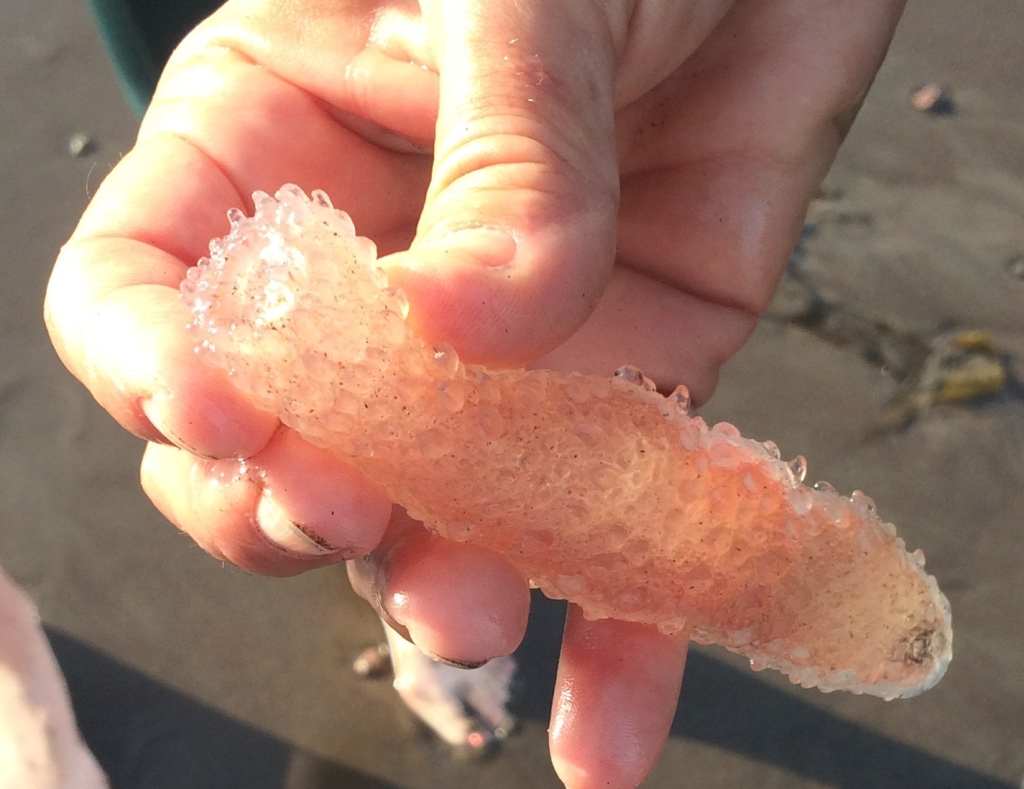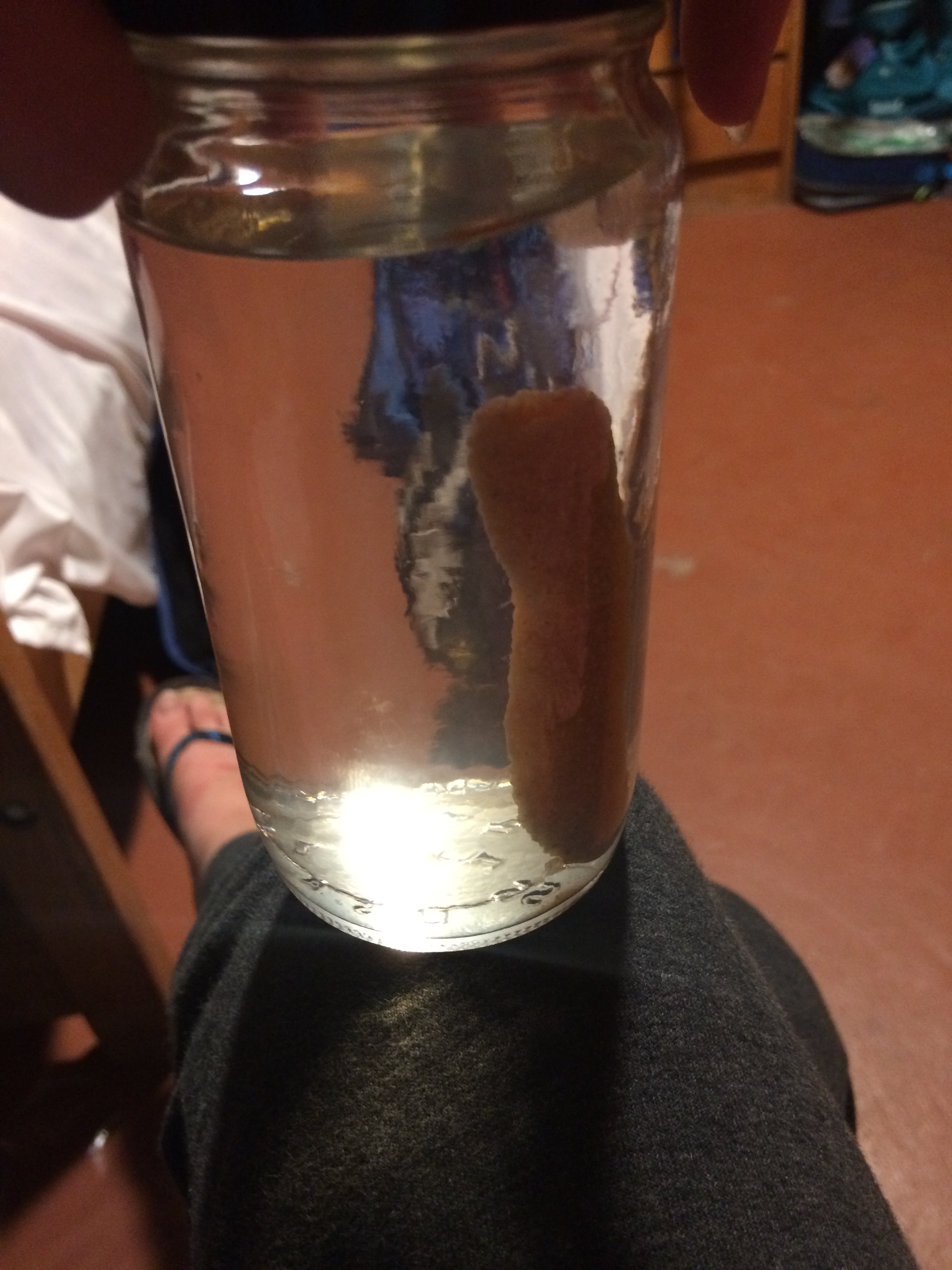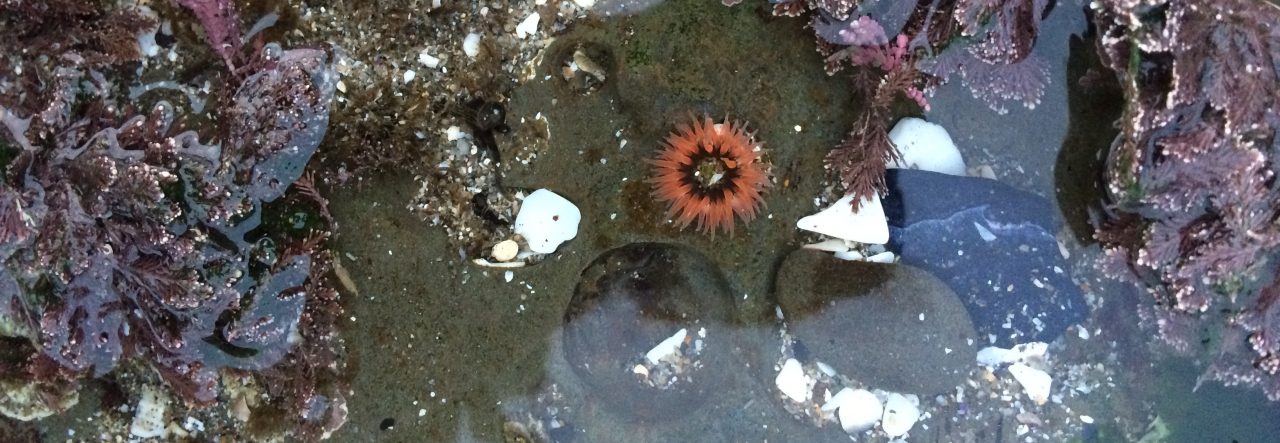In the summer of 2018, I had the opportunity to participate in a biological and anthropological field study to the Channel Islands of California, specifically Santa Cruz Island. The trip was headed (in part) by my zoology professor from my community college, who assisted me in several marine identification efforts.
Of course, I was most looking forward to the rocky intertidal exploration. We all woke up bright and early at about five in the morning and headed out to the rocky intertidal zone. There were several highlights, including the first octopus I’d ever seen in the wild, a chiton that refused to release itself from the bowl it’d been placed in, a sea hare, and the awesome visible radula of a wavy top turban snail. However, perhaps the most exciting part of the trip was lying on the beach on our walk back. We found this organism:

While holding our new, accidentally-collected pet chiton in a bowl, my zoology professor and I attempted to identify what in the world this could be. It looked a little like a sponge, but there was no point of possible attachment. There was only one opening– the other end of the creature was sealed shut.
Obviously, there was only one solution. We put it in a water dish and I balanced two dishes of water on the (extremely bumpy) trip back to the campsite.
When we returned, we put both the mysterious, unidentified specimen and the chiton into the refrigerator while we packed up. I hypothesized that the chiton would loosen its grip if cooled down, so into the refrigerator it went. We decided to pack the specimen in the cooler in a plastic bag so we could further investigate when we returned to the research station, since we needed to keep to our schedule. Meanwhile, we had successfully cooled Titan the Chiton down enough that he detached from the bowl and were now pursuing the side mission: Release Titan the Chiton.
Later that day, after Titan the Chiton had been successfully released, the specimen was retrieved and we were ready for investigation!

It smelled pretty disgusting. However, that provided a valuable hint! It smelled like rotting animal flesh, not rotting algae, so algae was ruled out.
It was also spewing slimy goo, which was certainly an interesting experience. After about an hour of attempting to identify it, we had no luck. But that was fine with me, because that meant…

…I got to take it home for further investigation! At dinner, we discussed the unknown nature of the specimen. One of my classmates immediately pulled out her phone and took to Google. After only a couple of searches, she actually found a picture of it! We learned that it was Pyrosoma atlanticum, which is a type of tunicate colony.
Tunicates, members of Urochordata, are closely related to vertebrates and thus humans. Adult tunicates, like the ones making up this colony, only have two out of the five chordate features: pharyngeal gill slits and the endostyle. They filter feed using mucus created by the endostyle, which coats the gill slits, which was likely the mucus it was spewing. There are both solitary and colonial tunicates– colonial tunicates like this one connect zooids (individual tunicates) through a common “tunic.”
Thankfully, we also learned it was definitely dead by the time we got it, because it wasn’t producing any blue light through bioluminescence.
Once we returned home and slept for a couple days, I brought my prized specimen to the zoology lab, where we could actually take a look with a dissecting microscope. After carefully slicing it, this is what we found:


Here, you can see the excurrent siphons pointing inward (the small pyramid-like structures on the bottom surface). These siphons propel the colony through the water. Each zooid has its own excurrent siphon.
My very first specimen now sits on my desk at UCSC in a place of honor.


Yay tunicates!!
LikeLike
Fine field practical experience lucky you are
LikeLike